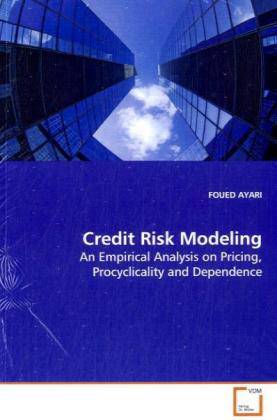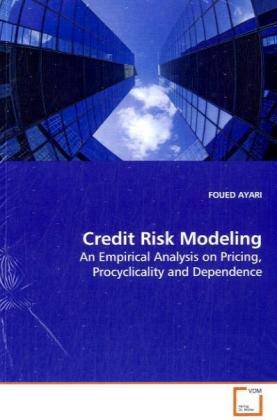
- Afhalen na 1 uur in een winkel met voorraad
- Gratis thuislevering in België vanaf € 30
- Ruim aanbod met 7 miljoen producten
- Afhalen na 1 uur in een winkel met voorraad
- Gratis thuislevering in België vanaf € 30
- Ruim aanbod met 7 miljoen producten
Zoeken
Credit Risk Modeling
An Empirical Analysis on Pricing, Procyclicality and Dependence
Foued Ayari
Paperback | Engels
€ 58,45
+ 116 punten
Omschrijving
Credit risk modeling has grown significantly over
the past few years; driven by explosive growth in
the credit derivatives market and more
quantitatively sophisticated bank capital
regulations under the upcoming Basel II Accord.
Credit risk modeling relies mainly on three
parameters,probability of default (PD),recovery rate
(RR)and correlation.This book intends first to
explain what is called the implied correlation
skew , and show that liquidity has some explanatory
power on correlation . The second section analyses
the relationship between credit default swap index
spread and stock market returns and the third
section provides a comprehensive analysis on the
cyclicality of default rates,recovery rates and
their dependence using financial data provided by
Bank Call Reports from 1991 to 2005 for all US
commercial banks with total assets greater than $300
millions. It shows that indeed, default rates and
recovery rates are cyclical and inversely related.
These findings have important implications in credit
risk modeling for both the credit derivatives market
and the new Basel II capital requirement proposed
rule(LGD).
the past few years; driven by explosive growth in
the credit derivatives market and more
quantitatively sophisticated bank capital
regulations under the upcoming Basel II Accord.
Credit risk modeling relies mainly on three
parameters,probability of default (PD),recovery rate
(RR)and correlation.This book intends first to
explain what is called the implied correlation
skew , and show that liquidity has some explanatory
power on correlation . The second section analyses
the relationship between credit default swap index
spread and stock market returns and the third
section provides a comprehensive analysis on the
cyclicality of default rates,recovery rates and
their dependence using financial data provided by
Bank Call Reports from 1991 to 2005 for all US
commercial banks with total assets greater than $300
millions. It shows that indeed, default rates and
recovery rates are cyclical and inversely related.
These findings have important implications in credit
risk modeling for both the credit derivatives market
and the new Basel II capital requirement proposed
rule(LGD).
Specificaties
Betrokkenen
- Auteur(s):
- Uitgeverij:
Inhoud
- Aantal bladzijden:
- 148
- Taal:
- Engels
Eigenschappen
- Productcode (EAN):
- 9783639132700
- Uitvoering:
- Paperback
- Gewicht:
- 214 g

Alleen bij Standaard Boekhandel
+ 116 punten op je klantenkaart van Standaard Boekhandel
Beoordelingen
We publiceren alleen reviews die voldoen aan de voorwaarden voor reviews. Bekijk onze voorwaarden voor reviews.








